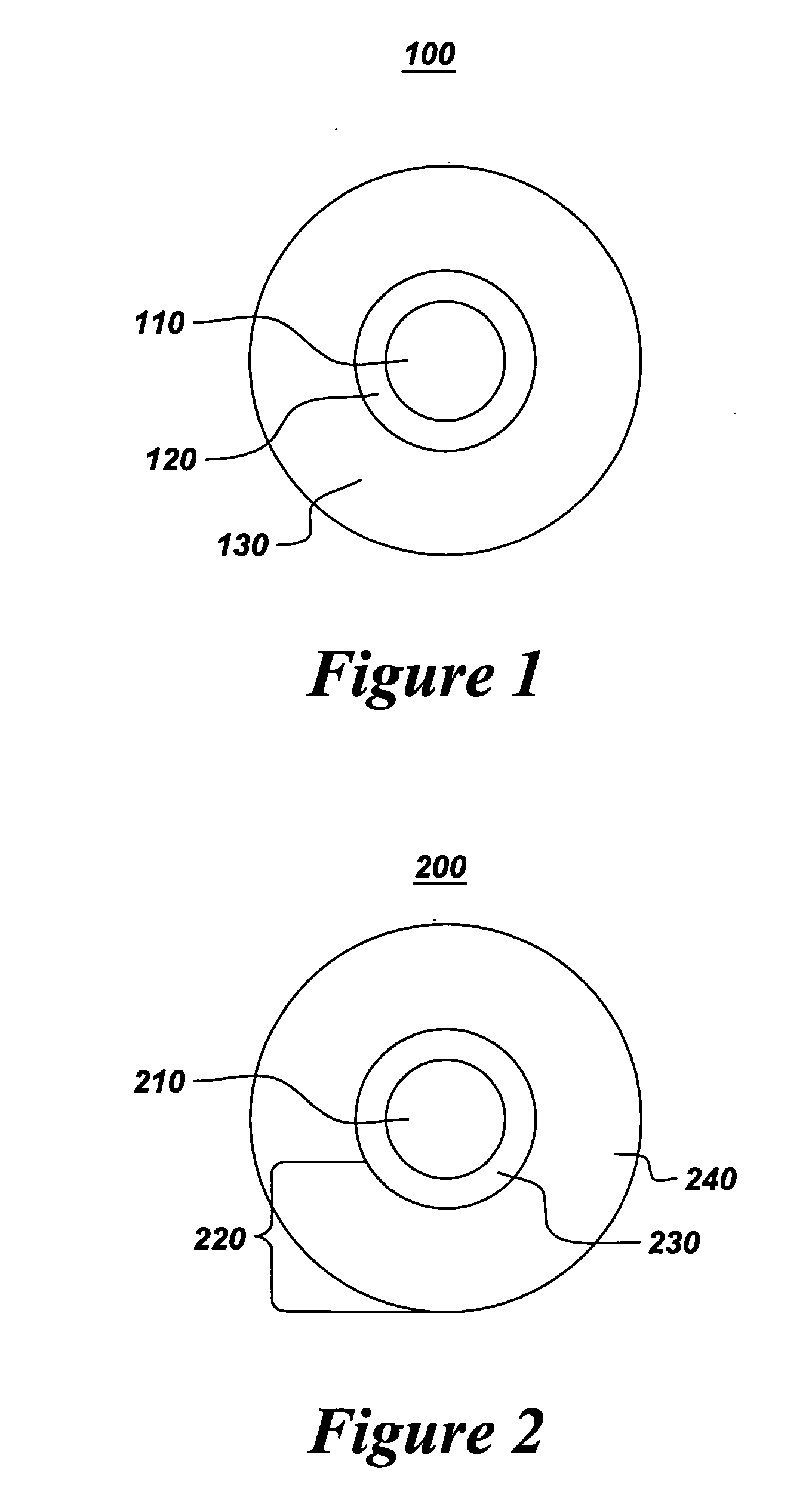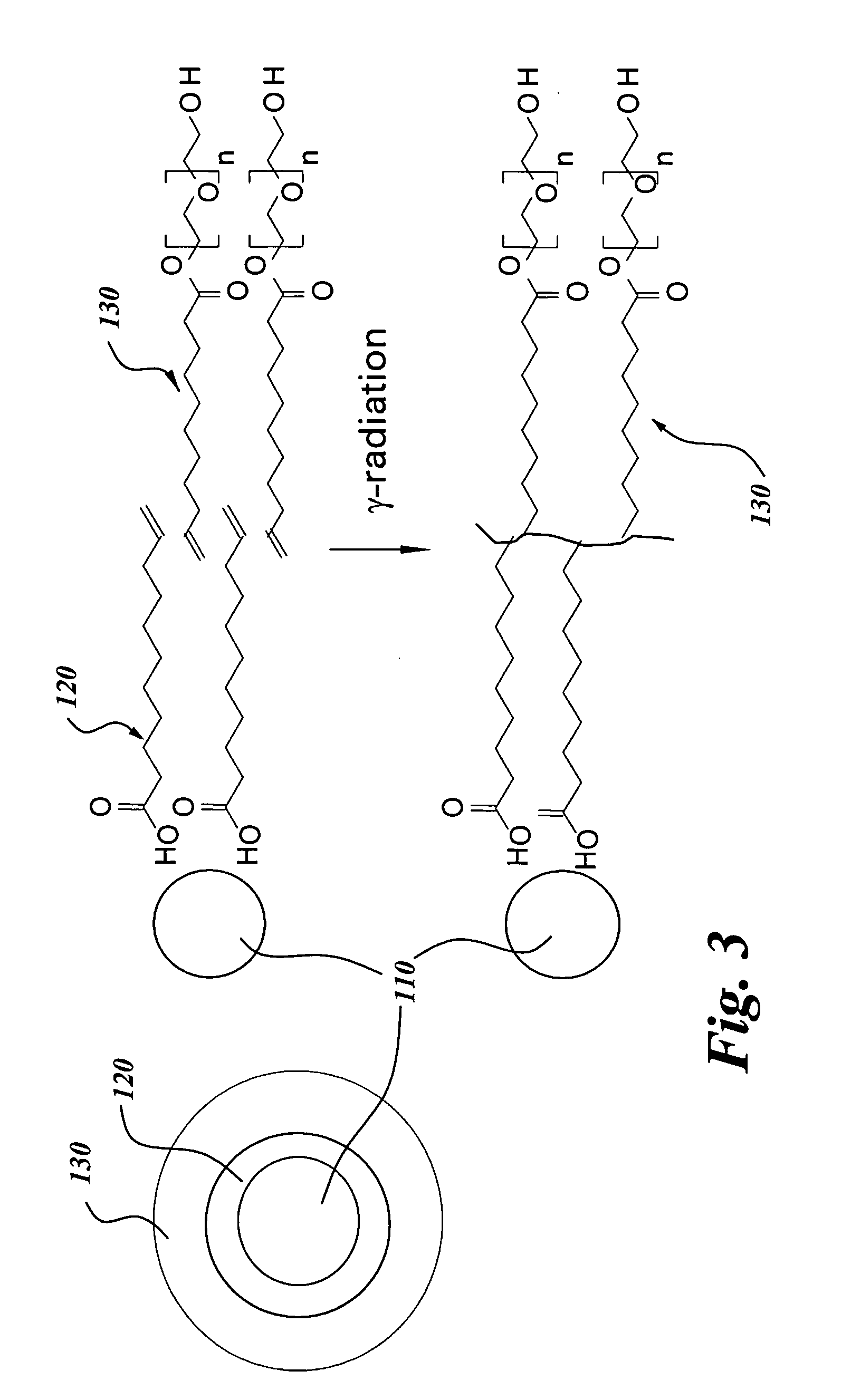Contrast agents for magnetic resonance imaging
a magnetic resonance imaging and contrast agent technology, applied in applications, nanomedicine, diagnostic recording/measuring, etc., can solve the problems of poor sensitivity when compared to other imaging techniques, induce anaphylactic reactions, and mr imaging, and achieve enhanced relaxation, high signal-to-noise ratio, and target ability
- Summary
- Abstract
- Description
- Claims
- Application Information
AI Technical Summary
Benefits of technology
Problems solved by technology
Method used
Image
Examples
example 1
[0054] Iron oxide nanocrystals coated with surfactant and monomer, as described hereinabove, were synthesized according to the non-aqueous synthesis route referred to hereinabove. A mixture of trimethylamine-N-oxide, 10-undecenoic acid (or, alternatively, lauric acid or oleoic acid), and deoxygenated dioctyl ether, each individually dehydrated and deoxygenated, was added under an inert atmosphere to a 50 ml 2-neck Schlenk flask. The mixture was homogenized with vigorous stirring and heating to about 100° C. Iron carbonyl (Fe(CO)5) was then added to the reaction solution, which was at a temperature in a range from about 100° C. to about 105° C., resulting in instantaneous and aggressive reaction. The reaction mixture was then heated to a temperature in a range from about 120° C. to about 130° C. under nitrogen and maintained at temperature for about 1 hour while being vigorously stirred. Additional iron carbonyl (Fe(CO)5) was then added to the reaction mixture, and the temperature wa...
example 2
[0055] Monodisperse, bilayer surfactant- or monomer-coated magnetic nanoparticles were synthesized according to the aqueous route described hereinabove. In a typical preparation, NaNO3, FeCl2 (anhydrous) and FeCI2.6H2O were dissolved in deoxygenated Milli-Q water with vigorous stirring under nitrogen. The Fe2+ / Fe3+ molar ratio in the solution was 0.5. The solution was heated to 80° C. and then charged with rapid sequential injections of NH4OH solution and 10-undecenoic acid. Crystal growth proceeded for about 45 minutes at 80° C. with constant vigorous stirring, producing a stable colloidal suspension of nanoparticles, which was then cooled slowly to room temperature with stirring. The suspension was placed on a magnet for at least 1 hour, and then filtered to remove any insoluble material. The material obtained was found to comprise monodisperse spinel-structured mixed iron oxide (γ-Fe2O3)1-y(Fe3O4)y nanocrystals. The average particle size of the nanocrystals an about 8.5±1.2 nm, a...
example 3
[0056] In this example, the preparation of nanoparticles having an iron oxide core, an inner layer comprising a monomer, and a water soluble outer shell that includes at least one ligand comprising PEG and undecenoic acid (PEGylated ligands), all of which are disclosed hereinabove, is described. The PEGYlated ligands were first prepared using either PEGs, or alternatively, PEG monomethyl ethers with molecular weights between 300-5,000 g / mol as starting materials. In one instance, PEG (2,000 Da) was dissolved in dry methylene chloride. Trimethyl amine, and dimethylamino pyridine (DMAP) were added to the solution and stirred under nitrogen in an ice bath. 10-undecenoyl chloride diluted with dry methylene chloride was added dropwise to the chilled solution, and the reaction mixture was stirred for about two hours, first in an ice bath and then at room temperature. The reaction mixture was then filtered, diluted with methylene chloride, and washed three times with 0.1N HCl, 0.1N NaOH an...
PUM
| Property | Measurement | Unit |
|---|---|---|
| Temperature | aaaaa | aaaaa |
| Temperature | aaaaa | aaaaa |
| Temperature | aaaaa | aaaaa |
Abstract
Description
Claims
Application Information
 Login to View More
Login to View More - R&D
- Intellectual Property
- Life Sciences
- Materials
- Tech Scout
- Unparalleled Data Quality
- Higher Quality Content
- 60% Fewer Hallucinations
Browse by: Latest US Patents, China's latest patents, Technical Efficacy Thesaurus, Application Domain, Technology Topic, Popular Technical Reports.
© 2025 PatSnap. All rights reserved.Legal|Privacy policy|Modern Slavery Act Transparency Statement|Sitemap|About US| Contact US: help@patsnap.com



